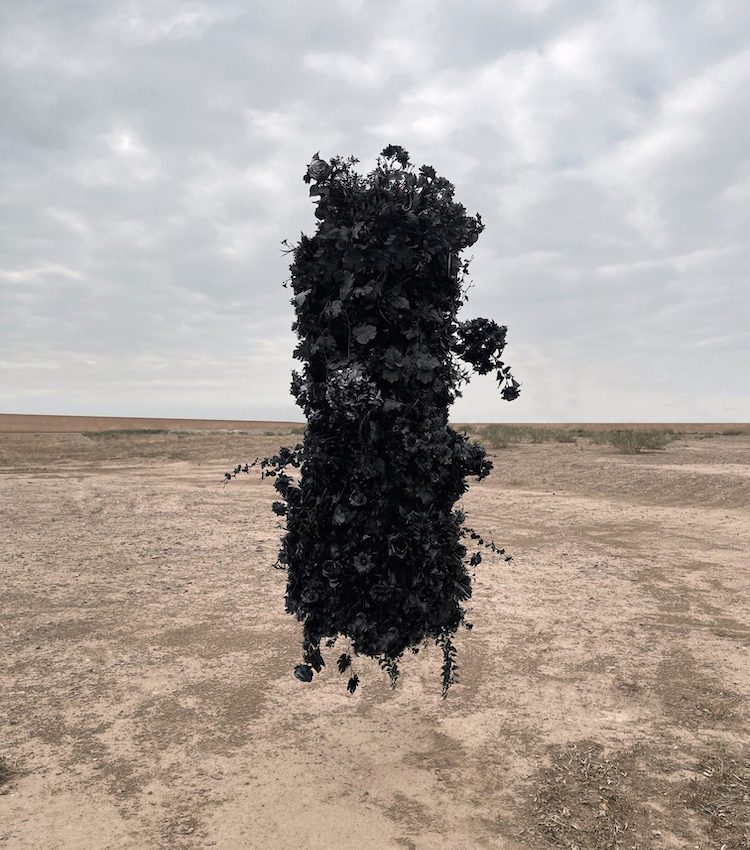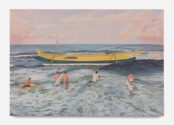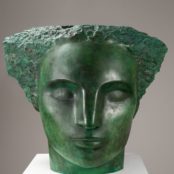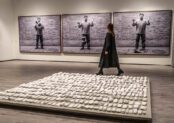Born in Antananarivo, Madagascar, Joël Andrianomearisoa uses textures and materials to elicit wonder and mystery in the viewer. Often black or monochromatic the artist uses the familiar frames of painting, circle, sculpture, or blocks to play with how we comprehend material, inviting us to gauge how we view objects in certain, assumptive ways – what is it we want to see and how much cooperation does the work need to offer?
In installations like Boys Cakes (2010) and I Love You For Financial Reasons (2015) Andrianomearisoa gives us fun and perceptive demonstrations of how much of what we see is subjective, and where the artist’s intention substantiates the presence of something through ‘art’. An idea taken to its extremity in the sacred commentary The Oak Tree (1973) by John Craig-Martin or a meditation on authorship in Gavin Turk’s invisible sculpture (2016) series, both of which push the viewer to complete the work through a cognitive process. In Andrianomearisoa’s work his aim is to beguile viewer, to consider the physical form, in an abstracted social way which is largely contained with the work itself. Which is to say that we’re actively drawn away from the real referents of his work, such as the money in our wallets, to see them in symbolic disassociated ways. We see money, but the notes appear in an ‘artwork’ and in that way they’re closer to memetic symbols than the real things, the idea of money rather than something we’d use. And it’s these ideas that form the material of through which Andrianomearisoa operates.
Andrianomearisoa graduated in architecture before finding success in art and since then he has gained renown for large installation works such as I have forgotten the night shown at the Venice Biennale in 2019. Personal attention that he’s used to raise awareness for Madagascan artists. Since 2020 he has been the artistic director of the Hakanto Contemporary art centre ‘working to accelerate exchanges, strengthen skills and initiate creative projects which both represent and support the local art scene’. Efforts that have bolstered his reputation as a part of a pioneering wave of contemporary African artists. Currently on show at MACAAL in Marrakesh Trebuchet asked Andrianomearisoa about his process.
What is the role of story in your work?
“History and stories compose an essential role in my approach. When I conceive a project, it firstly means taking an interest in the context. And by context, I mean the space, the place in an architectural form and the stories that can be found in these multiple territories. All spaces are charged with emotions, and I seek to give form to these narrations. I appreciate the fact that through a multiplicity of mediums and materials, stories can have an infinite sentimental journey and stimulate many sides of narrations.
My research encompasses different narrations and explores different mediums and materials. Perhaps realism can be found in the fact that I seek to give materiality to emotions? I’ll consider my work as it cuts and slices this geometry of abstraction, to access the reality of flesh and spirit.
Some say artworks create worlds, if so what are the rules of this world?
I would not talk about rules, because there aren’t any. My desire is to be surprised by images, by incessant movement created by lights, fragrances. If I decide to set limits it’d mean that this sentimental journey that I aspire to will have an end.
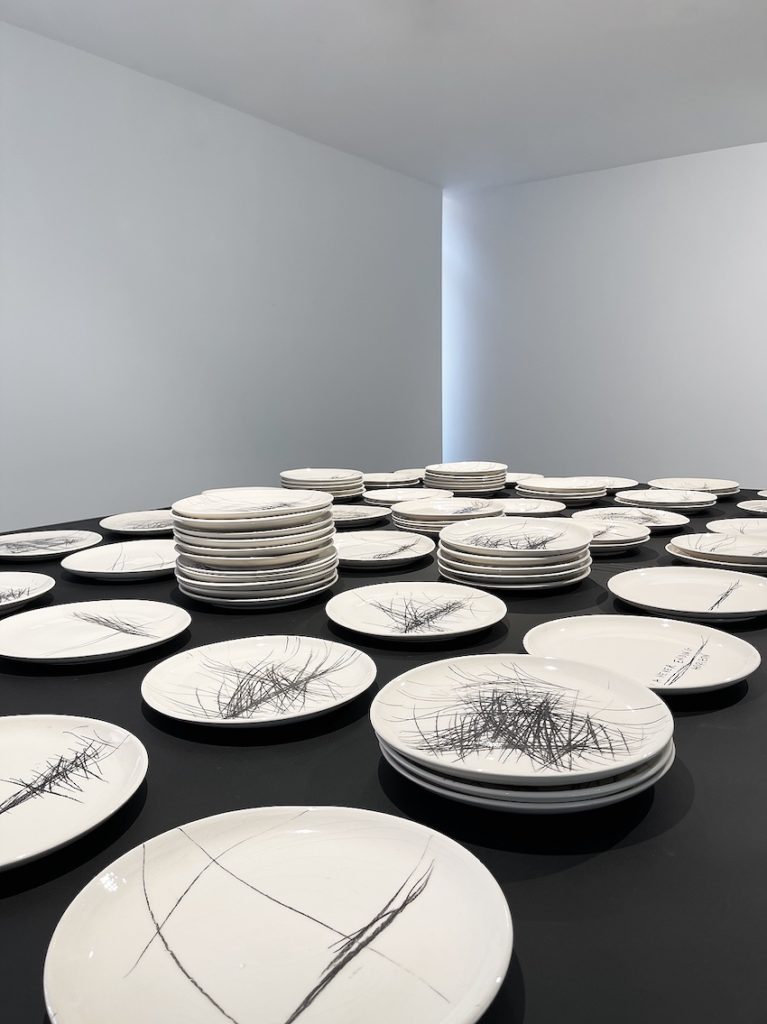
I have no specific inspiration and at the same time everything inspires me, namely the fragrances, the textures, the culture that brings together this infinite diversity of emotions. I guess that it shows in my artworks, the narrative can be the same that I created for myself, but it declined through multiple chapters, punctuations which offer to the visitors the possibility to navigate in different temporalities.
In all my projects, I always work on different geographies. According to me, the geographies of my workplaces, Paris, La Creuse and Antananarivo and geographies of the elements of materials create the specificity of my work. It is the accuracy and the adequacy of all these elements, their combination, which define the emotion.
The viewers’ desires are reflected on the canvas which they are exposed to. I don’t impose an interpretation. I do not approach my work in a direct way but place it at the edges of the desires of whomever discovers it.
What is your relationship to the attractiveness of your work?
Desire, desires, desires… there are many ways to interpret and decline a desire. It can bring us to the attractiveness of a body, to a textile, to a fragrance. It’s almost unreal what we can go through when we traverse this emotion. I would define this relationship like fragments of blooming emotions.
What is the key point of difference between what we might call the ‘real’ world and what you’ve created?
I don’t think that there is a key point of difference between them. I’d rather create in a real world to define my own and share it. It is a delicate exercise to confront them, but at the end the temporality, the present, the past, the future brings me back to this so-called ‘real world’.
What’s interesting in temporality, is that whatever we do and, in every field, we are confronted by it. Our whole lives are regulated by it. In art and philosophy, we seek to capture it and transform it into textures, materials… I’m looking for materialisation of the latter, and it is fascinating, because it seems like an endless journey, punctuated by improbabilities that I strive to embrace.
What separates the world you’ve created from fantasy?
When I conceive a project, there are always this series of questions that I ask myself.
How can I create through a fantasy?
How can I create through a memory?
How can I create through a desire, through flesh, through a multiplicity of sentiments. It brings me to sketch these emotions on a paper or a canvas, and find the intersection point between the several geographies that the world offers.
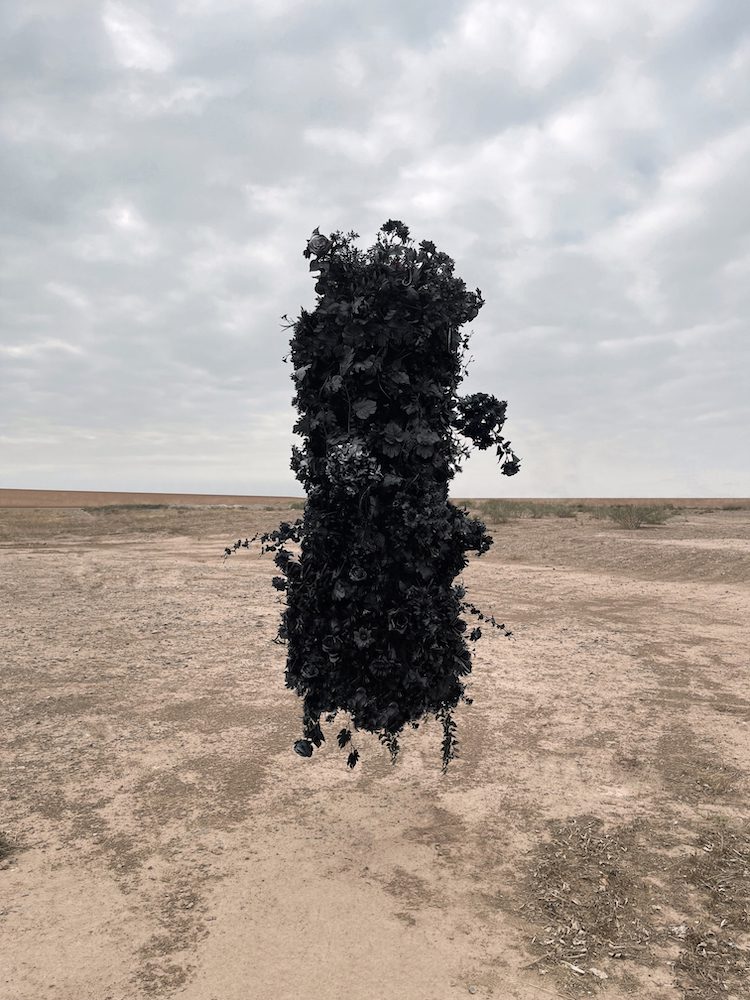
I inspire myself by my surroundings, it can be based on an image or a body movement. The world and all the elements that compose the latter is an endless source of inspiration that I combine with a fragment of life. And that’s what supports my concepts.
Do you see differences in the ideas of fantasy / non-real world / conceptual space?
I won’t draw a limit between fantasy and the real world. Indeed, I think that the real world is an infinite horizon fulfilled with fantasy. And it’s up to us to embrace it or leave it for the future. But at the end, we’ll always retrieve it somewhere, somehow in another temporality and with perhaps another state of mind.
How do you ask the viewer to consider the world you create? Do you need it to be immediate?
I’d not expect them to have an immediate reaction, it’s almost impossible. On the other hand, I would prefer them to take the time for the emotions to sink into their imagination.
I want them to lose themselves, embrace themselves. It’s always fascinating to create a dialogue with an artwork, it can agitate us or stir us up. We never know what we’ll feel. It is a particular moment, where we find ourselves suspended in time.
How do the formal aspects of art making construct the reality of the world you create? Do colours/shapes/faces have to be realistic?
As a visual artist my mission is to create forms / is to share forms and to give messages through forms.
so, to give an answer in general, without a specific medium, shapes or colour, it is important to have a discussion with the world through forms to create some fantasy, desires, emotion, or realistic situations.
In my work the audience is the part of the medium. Sometimes the paintings are very dark or minimalistic, or the textiles are very enigmatic. So, I am always inviting people to react via those forms and expressions. I want them to express their emotions from the experience. They can laugh, they can cry, they can smile…
Joël Andrianomearisoa Links
Joël Andrianomearisoa represented by:
Sabrina Amrani – Madrid
Primo Marella – Milan
Primae Noctis – Lugano
Images courtesy of Joël Andrianomearisoa Studio

The aim of art is to represent not the outward appearance of things, but their inward significance. – Aristotle

